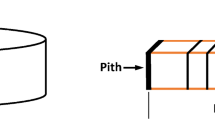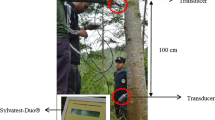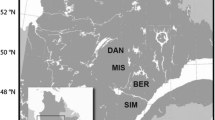Abstract
The potential for using growth strain measured at the stem periphery of standing plantation-grown Eucalyptus globulus Labill. trees as a non-destructive detection method for tension wood was assessed. Two trials were conducted 12 months apart in a 10 to 11 year-old provenance trial of E. globulus located in the Mt. Gambier region of south-eastern Australia. The relationship between the occurrence of gelatinous fibers over varying radial depths of wood tissue and growth strain measured at breast height was investigated. The percentage of gelatinous fibers in wood tissue laid down in approximately the two years prior to taking the growth strain measurement was found to correlate best with growth strain. In an expansion of this work, growth strain was found to be a good indicator of the presence of gelatinous fibers in wood tissue taken from the immediate position where growth strain was measured. Thresholds were found at approximately 800 uε, above which gelatinous fibers were common, and 1,200 uε where gelatinous fibers were always present in each of the three provenances assessed. Tension wood was found to increase in occurrence over the 12 month period in line with a trend of increasing occurrence and severity of tension wood found in earlier work in the plantation.
Zusammenfassung
Die Möglichkeit, Wachstumsdeformationen am Stammumfang von Bäumen aus Eukalyptusplantagen als eine zerstörungsfreie Nachweismethode für Zugholz zu benutzen, wurde abgeschätzt. Zwei Versuche wurden in einem 12-monatigen Abstand an 10 und 11 Jahre alten Eukalyptusbäumen aus Plantagen der Region Mt. Gambier in Südostaustralien durchgeführt. Die Beziehung zwischen dem Vorkommen von gelatinösen Fasern innerhalb unterschiedlicher radialer Tiefen des Holzgewebes und der gemessenen Wachstumsdeformation in Brusthöhe wurden untersucht. Der Anteil an gelatinösen Fasern im Holzgewebe, das sich zwei Jahre vor der gemessenen Wachstumsdeformation gebildet hatte, erwies sich als am besten korreliert mit der Wachstumsdeformation. In einer Ausweitung dieser Arbeit erwies sich die Wachstumsdeformation als ein guter Indikator für das Vorhandensein von gelatinösen Fasern im Holzgewebe, das man von der unmittelbaren Position entnommen hatte, wo die Wachstumsdeformation gemessen wurde. Schwellenwerte fand man bei ca. 800 uε, oberhalb derer gelatinöse Fasern allgemein vorkamen, bei 1200 uε, wo gelatinöse Fasern immer in allen Bäumen der drei Standorte präsent waren. Das Vorkommen von Zugholz war während der 12 Monate parallel zu den früheren Arbeiten über Vorkommen von Zugholz in der Plantage erhöht.


Similar content being viewed by others
References
Boyd JD (1977) Relationship between fibre morphology and shrinkage of wood. Wood Sci Technol 11:3-22
Boyd JD (1980) Relationship between fibre morphology, growth strains and physical properties of wood. Australian Forestry Research 10(4):337–360
Boyd JD (1985) The key factor in growth stress generation in trees lignification or crystallisation? IAWA Bulletin n.s. 6(2):139–150
Dinwoodie JM (1965) Growth stresses in timber—a review of European investigations. Paper presented at meeting of IUFRO Section 41, Melbourne, October 1965
Dinwoodie JM (1966) Growth stresses in timber—a review of literature. Forestry. 39(2)
Gérard J, Baillères H, Fournier M, Thibaut B (1995) Wood quality of plantation Eucalypts. Bois Foréts Tropiques 245:101–117
Kubler H (1987) Growth stresses in trees and related wood properties. Forest Products Abstracts 10(3):61–119
Nicholson JE (1971) A rapid method for estimating longitudinal growth stresses in logs. Wood Sci Technol 5:40–48
Nicholson JE, Campbell GS, Bland DE (1972) Association between wood characteristics and growth stress level: A preliminary study. Wood Science 5(2):109–112
Nicholson JB, Hillis WE, Ditchburne N (1975) Some tree growth-wood property relationships of eucalypts. Canadian J Forest Res 5:424–432
Okuyama T, Yamamoto H, Iguchi M, Yoshida M (1990) Generation process of growth stress in cell walls II. Growth stresses in tension wood. Mokuzai Gakkaishi 36(10):797–803
Sasaki Y, Okuyama T, Kikata Y (1978) The evolution process of growth stress in the tree. The surface stresses on the tree. Mokuzai Gakkaishi 24(3):149–157
Trenard Y, Guéneau P (1975) Relations entre constraintes de croissance longitudinales et bois de tension, dans le Hêtre (Fagus sylvatica L.). Holzforschung 29:217–223
Wahyudi I, Okuyama T, Hadi YS, Yoshida M, Watanabe H (1999) Growth stresses and strains in Acacia mangium. Forest Products J 49(2):77–81
Wahyudi I, Okuyama T, Hadi YS, Yamamoto H, Yoshida M, Watanabe H (2000). Relationship between growth rate and growth stresses in Paraserianthes falcataria grown in Indonesia. J Tropical Forest Products 6(1):95–105
Wardrop AB, Dadswell HE (1955) The nature of reaction wood. IV. Variation in cell wall organisation of tension wood fibres. Australian J Botany 3:177–189
Washusen R (2000) The occurrence and characteristics of tension wood and associated wood properties in Eucalyptus globulus Labill. PhD thesis, Department of Forestry, The University of Melbourne, pp 255
Washusen R, Ades P, Vinden P (2001) Tension wood occurrence in Eucalyptus globulus Labill. I. The spatial distribution of tension wood in one 11-year-old tree. Australian Forestry 65(2):120–126
Washusen R, Blakemore P, Northway R, Vinden P, Waugh G (2000) Recovery of dried appearance grade timber from Eucalyptus globulus Labill. grown in plantations in medium rainfall areas of the southern Murray-Darling Basin. Australian Forestry 63(4):195–201
Washusen R, Ilic J (2001) Relationship between transverse shrinkage and tension wood from three provenances of Eucalyptus globulus Labill. Holz Roh- Werkstoff 59:85–93
Zar JH (1996) Biostatistical analysis (third edition). Prentice-Hall International, pp 662
Author information
Authors and Affiliations
Corresponding author
Rights and permissions
About this article
Cite this article
Washusen, R., Ilic, J. & Waugh, G. The relationship between longitudinal growth strain and the occurrence of gelatinous fibers in 10 and 11-year-old Eucalyptus globulus Labill.. Holz Roh Werkst 61, 299–303 (2003). https://doi.org/10.1007/s00107-003-0388-3
Published:
Issue Date:
DOI: https://doi.org/10.1007/s00107-003-0388-3




